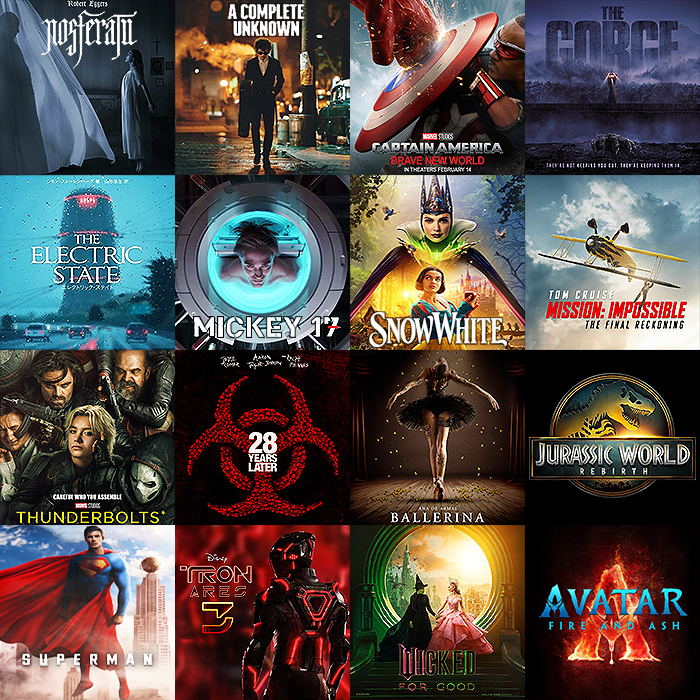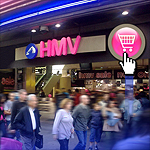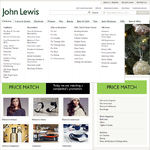How to Buy Better

Those that know me are aware that I’m a fairly keen shopper. And when I say keen - I really mean detail-oriented and precision- applied. Of all the different applied sciences, shopping is one of the lesser formulised ones, yet with the many inherent complexities of contemporary retail - in particular borderless digital retail / Internet. you really need some sort of checklist to ensure you avoid the multifarious and nefarious pitfalls.
I myself shop very largely online - probably 99% of all purchases are procured online - and the vast majority from just 3 main sources - Amazon, Ocado and Ebay. With my relatively recent forays into guitar I have added other regulars - Andertons, Bax Music, Dawsons, GAK, Gear4Musc, GuitarGuitar, Reverb and Thomann - the latter two shipping from USA and Germany respectively. I tend to buy a fair smattering of clothing also from France, Germany and Italy, and Manga-inspired figurines and vinyl from USA, Hong Kong and Japan.
I’ve probably experienced every sort of retail-related mishap and misadventure, but never the same one twice - you learn and improve adn evolve! And along the way you pick up all manner of tips and tricks to ensure you don’t suffer misfortune again. as you can read below, probably my favourite technique is ’Triangulation’ essentially a two-fold process first to establish earnest credentials of vendor, and secondly to establish accurate value proposition of product - i.e. is it keenly priced? Is the price too high? Or is it too ridiculously low. You then check various retail associations and communities and try to dig up any dirt on the prospective vendor. A great test here is finding the address and looking it up to establish whether business is ’real’ and that you have an actual physical contact point to handle issues through.
Then of course there is the age old subject of option paralysis - which is getting worse by the day. Never before have you had more options and choices - and products which used to be outside your financial release are not more affordable and almost instantly available. Don’t be fooled by a deal which is to good to be true - the cheapest is not always the best, although it totally can be - particularly when buying wine in expensive restaurants. Sharp-minded sommeliers are already wise to the fact that many don’t wish to be seen as cheapskates - so they go for the second or third cheapest option - which ironically have the most markup. Invariably your best option is the cheapest - or at least the wines with the least amount of markup - which supposedly tend to sit either end of the scale - it really pays to know your wines.
My mum taught me the fabric scrunch test for buying a suit - and I actually pretty much apply it to any clothing purchase. Simply crumple the fabric in a likely spot - elbows for instance, and see whether it leaves a crease or smooths out easily. I have in fact evolved my clothing purchase decisions to the 5 Fs - namely - Fabric (Material scrunch test), Fit (how it ’drapes’), Finish (Technical Detailing and precision in stitching), Form (Style), Function (Utility, Durability, Pockets, 2-way Zip etc.)
Anyway, there are hundreds of tiny tips and I can’t include all of them here. The purpose of this article is merely to highlight some of the obstacles and key strategies for overcoming them.
5 Common Mistakes most people make
- Mistaking Origin of Vendor - Much of Amazon Marketplace is composed of oversees vendors - know where you’re buying from and how that impacts on delivery times and costs / returns etc.
- Buying from disreputable vendors - On Amazon and eBay I try not to buy from anyone with less than a 99% rating, occasionally I will be forced to go a mite lower - 98% - but always make sure you check sales records for last 30 days of service / complaints
- Not Spotting unfeasibly high P&P or other supplementary charges - Always be aware of the total cost of your purchase - when buying from abroad, the final cost will usually include a customs charge + item processing charge which you should factor in
- Buying a product which is out-of-stock - Often a difficult one to spot - but there are tell-tale signs in how catalogue labelling is applied - try to buy only from stores which have qualified stock levels - difficult to do on Amazon and Ebay marketplaces. You usually know when you’ve bought an out-of-stock item when nothing happens for a few days - vendor is trying to get item back in stock - you may be unlucky, as by the time you realise - said product may be out of stock at other genuinely available vendors, or else not available at that same low price
- Choosing wrong delivery option - standard included delivery is often not best option - always best to have tracked delivery - so you can tell where exactly your goods are and if in fact they truly are in transit - there’s an awful Royal Mail service which only tracks delivery at point of receipt - which is useless for tracking where your package has got to - tracked delivery is usually just a few pounds, and well worth it
10 Key Selection Criteria
(Alphabetical)
Durability / Longevity
Often a product itself of quality, but equally of material choices and degree of finish. Weight / thickness and purity of fabric / material are often representative of high durability, but then certain material mixes also can increase inherent strength and durability of products. For instance there are two sides to laminates - the lesser quality side is how most cheap furniture is produced - with the core of the unit made of cheap fibreboard, but the exterior consisting of quality grained wood - albeit just a thin veneer. By contrast some laminate pieces are made of several layers of very high quality genuine wood veneers - which when stacked and glued together produce a far stronger component material, for instance one which can be fire-resistant and about as strong as steel. You often see 97& wool and 3% Nylon or Polyester - this is usually to make the wool moult less and more resilient, and is quite different to simply a cheaper mix - e.g. 50% wool, 50% acrylic. I personally never step inside a Primark, for everything I buy I want it to last - to be with me for as long as is possible - long-term durability can often have a cost factor, but it is largely down to the core composition of whatever you are buying - clothing, car, guitar etc. Some component materials and finishes are just inherently more durable / stain and scratch resistant / rust-free etc. than others. Same applies for shelf-life of groceries and food - where I mysteriously get better mileage typically from Ocado fruit and vegetables than from store-bought ones - most likely because of more direct route between general food storage facility and customer.
Functionality
This is essentially how well the product serves its core function - in ’Ronseal’ terms - how closely it matches its usage description. Most raincoats are water-resistant rather than water-proof, yet some of the most waterproof are either sticky / waxy, weighty or non-breathable, some a combination of all. So when you buy your raincoat - you need to factor in which are the key requirements - how water-resistant, what is the comfort level required, how many pockets, drying time from saturation, ease of care / washing / maintenance and repair.
Origin
Know where your goods are coming from - who produces them - which manufacturer / factory and how they are being delivered. Be aware that lots of companies nowadays are simply ’Umbrella Companies’ which supply the brand and aesthetic guidelines - but the actual manufacturing is done by a third-party independent operation which makes goods for lots of different companies at lots of different price points - irrespective of actual value of raw materials or labour. For instance Luxottica and Safilo make as much as 70% of the world’s sunglasses - including brands - Oakley and Ray-Ban - and pretty much every designer label you care to mention. Note that country of origin is often a bit of a red herring, as you can get very high quality as well as tat from the same country - many criticise China for product quality, but it also produces some of the world’s finest electronics. Japan was once the king of consumer electronics, but more recently has been somewhat overshadowed by South Korea - so it is the factory / manufacturer output which is key, not necessarily the geographical point of origin. Mexico makes lots of Fender guitars for instance, and many of those are superior to the output of the USA, better still for me is the Japanese Fender Strat Aerodyne - which would be my Fender of choice when I finally get around to acquiring one of those.
Quality
This is made up of five key elements - quality of raw materials, quality of design, quality of assembly, quality of finish and of course service. Without service, all the other parts are moot - for if the product is not despatched / delivered / sold in a sufficiently appealing manner, and does not make it to the end consumer, then all of this is wholly worthless.
Service
For many products this is as important as the core product itself - say for cars or computers - aftermarket care is essential for ensuring long-term optimal function. Hence the very best device on its own is often not sufficient to merit a purchase - often the second best product wins by having the best service, occasionally other factors impact like proprietary content - in the form of Betamax vs G2000 vs VHS or say PlayStation vs Xbox.
Sustainability
Here we combine a couple of attributes - including cost and ease of maintenance, as well as environmental, ecological or ethical impact. Does your product make use of toxic components / fossil fuels or is it for instance required to have regular maintenance which is costly or arduous in nature. Once the product has outrun its usefulness - can it be recycled, reworked or disposed of cleanly - all these questions bear consideration.
Suitability
For some this is reliant on the property of functionality, for others it is cost, accommodation, size, impact etc. IE all the different impact factors of possessing such a product - really beyond its core inner workings. On occasion a product needs to fit in as part of a further assembly / grouping or chain / Accessory / ensemble. Many will have additional criteria which define suitability - for instance those buying a watch may desire a backlight or automated / automatic charging process (e.g. solar) - beyond the core basic function of the device. What is of critical concern here is the original requirement - what exactly is required, for whom and for what specific purpose. If money is no object you may have no issue with buying £200 trainers for a 3 year old, which for most people would be seen somewhat as an act of lunacy considering the brief time they would likely be used for.
Triangulation
Never just believe one single source - you must cross reference multiple brands and multiple vendors to find the absolute best solution to your requirements. Amazon is on many occasions not the most cost-effect option for a product, and if something looks too good / too cheap to be true - then it usually is. Amazon Marketplace is so big now that it can frequently catch you out. I never buy from anyone who has less than a 99% rating - I also check for local representation in terms of Address or GB VAT number if rapid delivery is a factor. I buy goods from all over the world, and often it is cheaper to buy the same product out of Europe rather than in the UK - so due diligence is both an absolutely necessary process, as well as a rewarding one. Buying Fashion from Italy or France can often result in your item arriving just a couple of days later - buying from source usually means you get access to a larger range, wider choice of colours etc. and often at a better price than available locally.
Value
This is a combination of several factors - including intrinsic cost of components, quality of assembly, overall design detail and functionality, along with uniqueness. As with many things it is up to the buyer to decide what their target budget is, and whether the particular object of desire fulfils all the requirements. I often don’t have qualms about buying certain pricey products - if I can justify the use case scenario and the uniqueness of the product - can I get something very similar from somewhere else at a keener price? How long do I want this object to last. Of course everyone has a ceiling for the maximum they would want to pay within specified categories - depending on how strongly you feel about something, you might want to spend a little more on one object say 0 max outlay for single guitar at £2,000, yet max outlay for a watch at half that or £1,000 - everyone has different priorities.
Versatility
This is often a function of value too - especially when you are buying a tool or utility - whether Leatherman, Victorinox knife or an SUV - how much mileage you get out of your product is important. Every jacket I acquire should really have 4 pockets to hold different objects and devices (mobile, wallet, keys, gloves etc.) - at the very least 3, ideally sealed pockets using snaps or zips. I also have a preference for Napoleon pockets and two-way zips. I really won’t buy any zipped garment - sweater / hoodie / jacket unless there is a two-way zip - for ventilation, comfort and versatility of course. Every time I buy a garment I think - what occasion does this suit, and what else does it match up with - every now and again I need to try different colurways - which means extension into different directions - but again - matching garments for suitability, durability etc. all the while.

Did you find this content useful?
Thank you for your input
Thank you for your feedback
Upcoming and Former Events
Affino Innovation Briefing 2024
Webinar - Introduction to Affino's Expert AI Solutions - Session #2
Webinar - Introduction to Affino's Expert AI Solutions - Session #1
PPA Independent Publisher Conference and Awards 2023
Meetings:
Google Meet and Zoom
Venue:
Soho House, Soho Works +
Registered Office:
55 Bathurst Mews
London, UK
W2 2SB
© Affino 2024



































